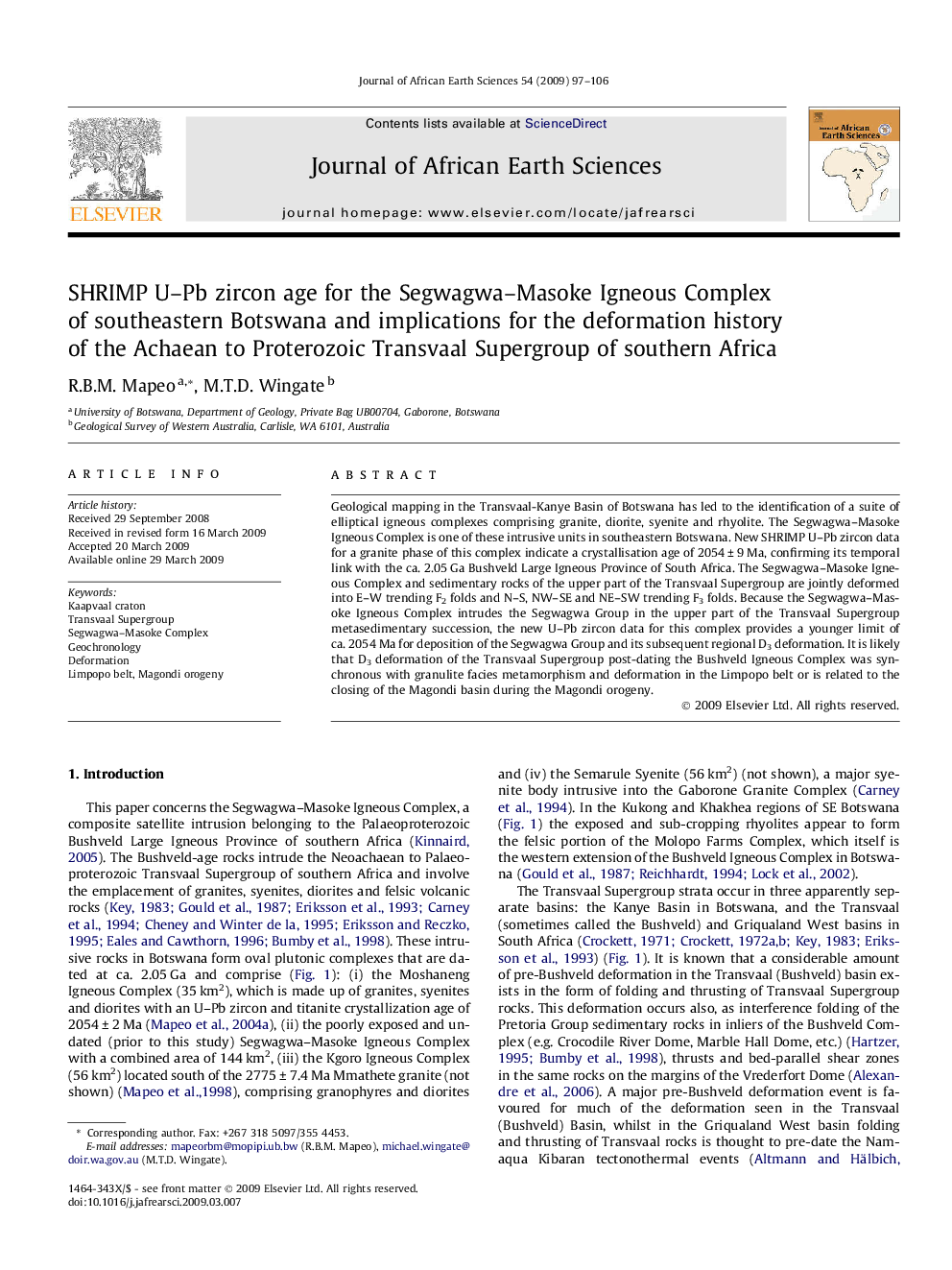| Article ID | Journal | Published Year | Pages | File Type |
|---|---|---|---|---|
| 4729452 | Journal of African Earth Sciences | 2009 | 10 Pages |
Geological mapping in the Transvaal-Kanye Basin of Botswana has led to the identification of a suite of elliptical igneous complexes comprising granite, diorite, syenite and rhyolite. The Segwagwa–Masoke Igneous Complex is one of these intrusive units in southeastern Botswana. New SHRIMP U–Pb zircon data for a granite phase of this complex indicate a crystallisation age of 2054 ± 9 Ma, confirming its temporal link with the ca. 2.05 Ga Bushveld Large Igneous Province of South Africa. The Segwagwa–Masoke Igneous Complex and sedimentary rocks of the upper part of the Transvaal Supergroup are jointly deformed into E–W trending F2 folds and N–S, NW–SE and NE–SW trending F3 folds. Because the Segwagwa–Masoke Igneous Complex intrudes the Segwagwa Group in the upper part of the Transvaal Supergroup metasedimentary succession, the new U–Pb zircon data for this complex provides a younger limit of ca. 2054 Ma for deposition of the Segwagwa Group and its subsequent regional D3 deformation. It is likely that D3 deformation of the Transvaal Supergroup post-dating the Bushveld Igneous Complex was synchronous with granulite facies metamorphism and deformation in the Limpopo belt or is related to the closing of the Magondi basin during the Magondi orogeny.
